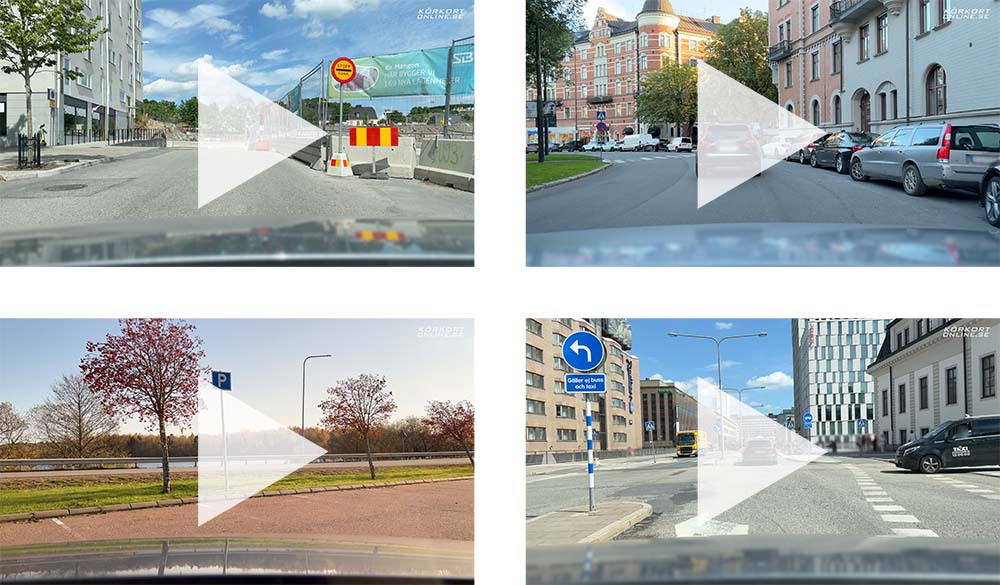Sight and other senses in traffic
Sight is the most important sense in traffic. You receive around 90% of all traffic information through your eyes.
If you have poor eyesight, your driving licence may be issued on the condition that you must wear glasses or contact lenses to drive. Also remember that your eyesight changes with age, so it is recommended that you have regular eye tests.
Terms
Visual field
The area we see is called the visual field. The visual field has the shape of a semicircle, i.e. 180°.
Central vision
The thing you focus your eyes on is what you will see most clearly. This is your central vision, and it constitutes approximately 1–2% of your visual field. Central vision is important in order to, for example, make out what is written on a road sign.
Peripheral vision
The remaining 98–99% of your visual field is your peripheral vision. Here you can perceive that something is happening but will usually need to shift your gaze to check with your central vision exactly what it is. Peripheral vision is impaired by alcohol and tiredness.

Semicircle: Visual field
Ö: Location of eye
1: Central vision
2: Peripheral vision
Assessments
You constantly collect information through your eyes. This information goes to the brain to be interpreted. It is impossible to make profound assessments about everything you see in traffic, as the brain would become overloaded.
Instead of assessing everything, the brain quickly selects relevant things to focus on. This selection is made with the help of a number of factors, including your:

If you know from experience that children sometimes play here, you will be extra careful.
- Experience
- Knowledge
- Expectations
- Interests
- Needs
- Impressions
If your knowledge tells you that parked cars can hide pedestrians, and you have experience of children running out in that same spot, your brain will momentarily devote most attention to that aspect.
Terms that may be good to know:
- Perception: Becoming aware of what is happening around you.
- Selective perception: Selecting and focusing on what is relevant.
Experienced drivers
- Flexible gaze and smooth transitions.
- Focus on moving objects.
- Broader and longer field of observation.
Inexperienced drivers
- Fix their gaze on objects and keep it there for too long (abrupt transitions).
- Focus on stationary objects.
- Narrower and shorter field of observation.
Optical illusions
Humans are smart and have a vivid imagination. This is very helpful in traffic. We are able to imagine a probable scenario based on very little information.
However, we sometimes interpret what we see incorrectly, thus creating an optical illusion.
Examples of optical illusions
- A car with only one headlight (“one-eyed car”) is mistaken for a motorcycle/moped.
- Snow smoke causes you to become disorientated.
- A motorcycle is mistaken for a slow moped.
Illustration of the “one-eyed car” optical illusion. It is dark out. A thinks that B is a small and slow moped, as B only has one headlight. A is therefore driving closer to the middle of the road. When A finally realises that B is a car, they are close to colliding.
Tunnel vision
Tunnel vision means that your eyes scan a more narrow area. You miss things that happen on the side of the road (in the periphery). It is as if you are driving in a tunnel with dark walls.
The risk of tunnel vision increases with
Your other senses
- Your hearing alerts you to someone honking their horn or a nearby emergency response vehicle. It also enables you to hear if the engine is not running as it should.
- Your sense of touch and balance gives you information about how the car is moving on the road and whether the road condition is good or bad.
- Your sense of smell is important for discovering any leakage of hazardous substances.
Latest forum posts
- << Tiredness
- Vision ↑↑
- Impairments >>




